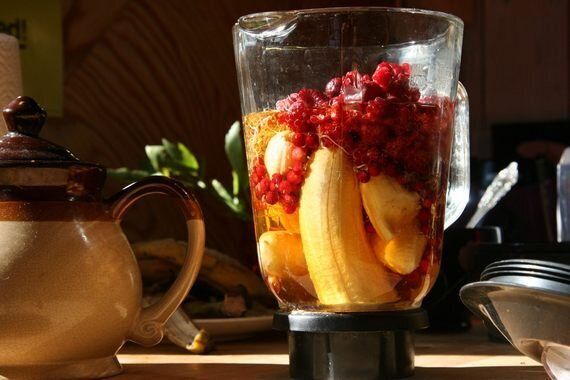
*Kerstin Göpfrich [2013] has just completed her PhD in Physics as a Gates Cambridge Scholar at the University of Cambridge. She recently produced a programme for the BBC's Naked Scientists podcast, on a citizen science project which allowed people to decode the DNA of a smoothie. Picture credit: Wikimedia commons.
It is smaller than your smartphone. It plugs into your laptop with a standard USB cable. What is it? A new DNA sequencer. This week, it has been named amongst Science magazine's top 10 breakthroughs of the year.
If you imagine a technology that has improved tremendously over the course of your own lifetime, computers may be the first thing that comes to mind. In a relatively short time, a room-filling apparatus for the military has been transformed into an omnipresent consumer product. And yet computers are being outpaced by DNA sequencers in many respects.
How DNA sequencing started
DNA stores the information of life in the order of the letters A, T, C and G [which represent the four nitrogen bases adenine, thymine, guanine and cytosine]- a bit like how computers store information in a string of numbers using 0 and 1. DNA sequencing involves reading the order of these letter bases. It started in the 1960s soon after the discovery of the iconic double helix. Scientific efforts were fuelled by the hope that a better understanding of our genomes would open up unprecedented opportunities to diagnose and treat disease. It wasn't until 2003 that the first human genome was read at a cost of three billion dollars. Today, the same result can be achieved for around 1,000 dollars in a day.
What's next?
Computers are becoming artificially intelligent and communicate via the internet of things. And DNA sequencers? They now fit into my back pocket. Recently I had the chance to try the technology that enabled this sudden miniaturisation with Kim Judge from the Wellcome Trust Sanger Institute. Together, we set out to challenge students at the Perse School in Cambridge. What should we sequence? The kids? That was ethically questionable. Some bacteria? Too boring. "Why not sequence a smoothie?" Kim suggested. It was an experiment for us just as it was for the kids. We had no idea whether it would work.
DNA my smoothie!
In the morning I prepared a smoothie with mystery ingredients. The kids helped me to get the DNA out of the smoothie. In a laboratory, we would carefully follow a refined procedure, but in the classroom, a quick and dirty method with household ingredients had to do the job. What we ended up with looked, quite frankly, like a bit of stringy snot. It was the DNA from the fruit in the smoothie and supposedly contained all the information we need to discover what went into the drink. I was sceptical. Kim added chemical precursors for the sequencing process. We squirted some of the DNA into the DNA sequencer, which was plugged into a standard laptop.
What we could not see inside the device was an array of invisibly small channels called nanopores. When a strand of DNA is pulled through these nanopores, it blocks part of the current which flows across it. Since the bases A, T, C and G are chemically different, they cause different blockade levels, which directly appear on the computer screen. This data is analysed in the cloud and converted into a spreadsheet full of the letters A, T, C and G. Depending on how much DNA is read, this can take from minutes to days. We left the sequencer to run overnight. Some DNA reads were of high enough quality that we could copy and paste them into an online DNA database to compare it to known plant genomes. What was in the smoothie? Strawberry and banana - the kids got it right!
What can we do with a portable sequencer?
They are many potential uses of a sequencer. Think of the horsemeat scandal of 2013. "There is no better way to be absolutely certain what is in your food than to look at the DNA," says Kim. The portable sequencer is currently being used to monitor the Zika epidemic in Brazil. For the first time, DNA has been sequenced in space on the International Space Station. Just an expensive marketing gimmick? I spoke to Dr Aaron Burton from NASA. "For the crew's health standpoint, if you have a sequencer you can identify microbes in the air, surfaces and water and make sure that everything's safe," he said. That sounds sensible. But what about more alien endeavours? One day, we may even be able to look for DNA on other planets - something that was unthinkable a few years ago when DNA sequencing required large sequencing centres.
DNA sequencers for Christmas - and what else the future may bring
When I started doing my PhD four years ago, I was pulling DNA through nanopores and, quite frankly, I did not believe in nanopore sequencing. Today, I am glad others did. The sequencer has gone from a billion dollar multinational project into the palm of my own hand within my lifetime.
What will the future bring? Will we be able to predict our fate with DNA sequencers and do we want to? Do we want to accept that we are fat because we have the couch potato gene? It's not all in our DNA, but the more DNA we sequence the better we will understand its meaning, raising the prospects for personalised medicine. Think of pathogen surveillance or ecology - DNA sequencing is not just about the human genome. Like computers, DNA sequencers have the power to change our lives - in 2017 we should make sure that is in a good way.
